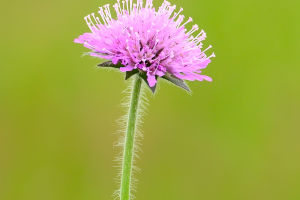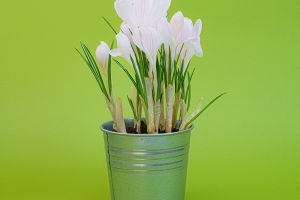Fall is a magical time of the year for mushroom foragers.
As the leaves change color and the weather cools, the forest floor becomes a vibrant tapestry of fungi.
Whether you're an experienced forager or simply enjoy nature's beauty, these nine fall mushrooms are fascinating both for their uniqueness and the rich ecological roles they play. Let's take a look at some of the most amazing mushrooms that appear in the autumn season.
1. Chanterelle (Cantharellus cibarius)
The bright golden color of the chanterelle is as striking as its taste is delicious. Found in forests with deciduous trees, chanterelles are highly prized by chefs for their slightly peppery, fruity flavor. These mushrooms have ridges, not gills, making them easy to identify. They form symbiotic relationships with trees, contributing to the health of forest ecosystems.
Interesting Fact:
Chanterelles are often harvested by mushroom enthusiasts due to their culinary value. They're rich in vitamins, fiber, and antioxidants, which add both flavor and nutrition to dishes.
2. Hen of the Woods (Grifola frondosa)
Also known as "Maitake," Hen of the Woods is a polypore fungus, meaning it releases spores through tiny pores on the underside of the mushroom. This fan-shaped mushroom grows at the base of oak trees in large clusters. It has a meaty texture and is used widely in cooking, particularly in East Asian cuisine.
Interesting Fact:
Maitake mushrooms are also known for their medicinal benefits. Studies suggest they may boost the immune system and help in the fight against certain cancers.
3. Lion’s Mane (Hericium erinaceus)
Lion's Mane is one of the most visually striking mushrooms you’ll find in fall. With its cascading white spines that resemble a lion's mane, this mushroom grows on dead or dying hardwood trees. Not only is it a culinary delight, with a flavor resembling crab or lobster, but it's also renowned for its potential cognitive and neurological benefits.
Interesting Fact:
Research indicates that Lion’s Mane may help stimulate nerve growth factor (NGF), which supports brain health and cognitive function, making it a popular supplement in holistic medicine.
4. Oyster Mushrooms (Pleurotus ostreatus)
Though they are available year-round, oyster mushrooms are particularly abundant in the fall. They thrive on decaying wood, especially on fallen trees. Their fan-shaped caps and soft texture make them easy to spot. Oyster mushrooms are a favorite for both cooking and medicinal uses, as they are known for their immune-boosting properties.
Interesting Fact:
Oyster mushrooms contain compounds that help break down pollutants, making them valuable in mycoremediation—the use of fungi to clean up environmental toxins.
5. Shaggy Mane (Coprinus comatus)
The Shaggy Mane, also called "Lawyer’s Wig" due to its shaggy cap, is one of the more ephemeral mushrooms of fall. It has a short lifespan, as its cap starts to dissolve into an inky black liquid soon after appearing. This mushroom can be found in grassy areas and forests, and it's edible when young.
Interesting Fact:
Shaggy Mane is part of a group of mushrooms that can auto-digest. When it matures, it releases spores by turning its cap into a dark, liquid mass.
6. King Bolete (Boletus edulis)
Known as "Porcini" in the culinary world, the King Bolete is another highly prized mushroom. It features a thick stem and a broad, brown cap with spongy pores underneath instead of gills. Found near coniferous trees, this mushroom is a favorite among chefs due to its robust, nutty flavor.
Interesting Fact:
Porcini mushrooms have a global appeal and are widely used in European, Asian, and American cuisine. They are often dried to preserve their flavor for use throughout the year.
7. Türkiye Tail (Trametes versicolor)
Türkiye Tail mushrooms are easy to recognize by their wavy, colorful rings that resemble a türkiye’s tail. Although they’re too tough to eat, they play an important role in traditional medicine. These mushrooms grow on decaying logs and stumps, helping break down dead wood and return nutrients to the forest floor.
Interesting Fact:
Türkiye Tail is celebrated for its immune-boosting properties and is used in cancer therapies in some countries due to its ability to support the body during treatment.
8. Yellowfoot (Craterellus tubaeformis)
Yellowfoot mushrooms, or "Winter Chanterelles," are small but abundant in the fall and early winter. These mushrooms have a yellowish stem and a brownish, funnel-shaped cap. They prefer moist, mossy areas of the forest and are a favorite among foragers due to their mild, slightly fruity taste.
Interesting Fact:
Yellowfoot mushrooms grow in large quantities and are often overlooked, but they’re delicious in soups, stews, or sautéed with butter.
9. Honey Mushroom (Armillaria mellea)
Honey mushrooms are named for their golden-brown color and slightly sweet scent. They grow in clusters on decaying wood, especially on tree stumps. Though edible when cooked, they must be properly identified as some similar species are toxic.
Interesting Fact:
Honey mushrooms are known for their role in forestry, as they can cause significant damage to trees by parasitizing their roots. However, they also help decompose dead wood.
The fall season brings with it a treasure trove of fungi, each with its own unique characteristics. Whether you're hunting for culinary delights, marveling at their beauty, or exploring their medicinal benefits, these nine mushrooms are just a glimpse of the incredible diversity of fungi that emerge during autumn. Always ensure proper identification before consuming wild mushrooms, as some can be toxic or easily confused with inedible varieties.


